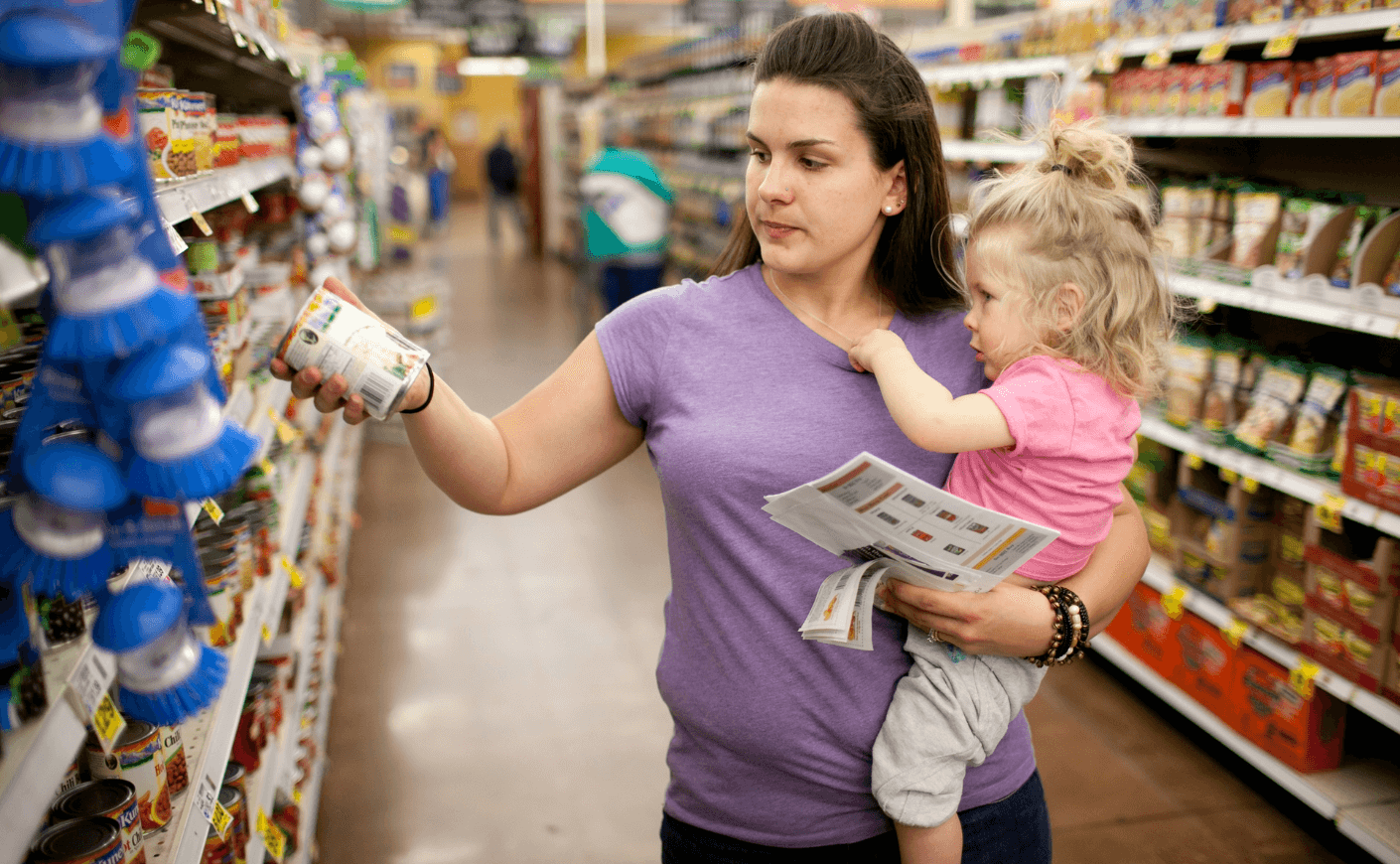Right now, the U.S. House of Representatives is advancing a proposal that would strip millions of kids and families of the food assistance they count on to stay healthy and thrive.
At a time when food prices are rising but incomes aren’t, Congress is considering slashing up to $300 billion in funding to the Supplemental Nutrition Assistance Program (SNAP) — the largest cut to the program in its 86-year history. Forty percent of SNAP participants are children.
SNAP, or what used to be called food stamps, provides monthly grocery benefits usable at grocery stores, farmers markets, and online food retailers. The program helps families living on low incomes stretch their budgets — preventing them from having to choose between buying food and paying their other bills — and makes healthy options like fresh produce and proteins more accessible to everyone who needs them.
Americans are united in their support against this proposal: A recent survey found that 86 percent of adults would be concerned if their representatives in Congress supported cuts to SNAP and other food-assistance programs.
What will happen if SNAP funding is cut?
There’s no doubt that if these cuts go through, more kids will go hungry.
The American Dream is the promise that no matter where you start in life, you have a chance to build a better future for yourself and your kids. It’s a promise that through hard work, you’ll be able to provide for your family. That dream is one that’s fueled and inspired millions of Americans, who’ve gone on to achieve remarkable things.
But today, 1 in 5 kids in America are living with hunger. How can they possibly thrive while worrying about where their next meal will come from?
Patrick, a married father of three from Ohio, is just one recipient of SNAP. He cares full-time during the day for his 3-year-old son, along with his 7- and 11-year-old daughters, while studying at night to become a licensed electrician. His wife works as an LPN at the local orthopedic center, and together, they’re working to build lasting stability for their family. Thanks to SNAP, Patrick says he can prioritize his family’s health without sacrificing his financial responsibilities. With fresh ingredients from local farmers’ markets, they cook homemade meals, share family time around the table, and pack healthy lunches their kids can take to school. Patrick says it’s a relief to see his young son proudly open the fridge and find fresh food waiting for him. “SNAP benefits are more than just a handout — they’re a hand up for my family. It is making all the difference in my life right now.”
SNAP is also a lifeline for families like Melissa’s, a self-employed mother of four in New York whose values are rooted in faith, family, and personal accountability. She and her husband work hard to raise their two toddlers and guide their two teenagers in financial literacy and healthy living; they didn’t expect to need public assistance. But during back-to-back pregnancies, staying home with newborns made it impossible for Melissa to keep working. SNAP offered a temporary but vital bridge, helping her cook nutritious meals, avoid fast food, and keep up with household bills. That support gave her family the room to save for a car, invest in their children’s education, and build a stronger financial future. “Getting SNAP was really what helped us get above water,” she says, “It changed the trajectory of our lives.”
Like Patrick and Melissa, the vast majority of SNAP participants who can work, do work and others are building a better future through education. They are parents working two jobs and still not having enough to cover the cost of living. Among them are veterans, people with college degrees and people living with disabilities. They are Republicans, Democrats and Independents. Find more of their stories here and here.
What can you do to help?
Tell Congress that this is a direct threat to children’s health, learning, and well-being. Join No Kid Hungry, the national campaign to end childhood hunger, in telling Congress that SNAP matters, by clicking right here — and ask your friends and neighbors to do the same.
Anne Filipic is the CEO of Share Our Strength, the organization behind the No Kid Hungry campaign. Find more at NoKidHungry.org or on Instagram, Threads or Bluesky.









